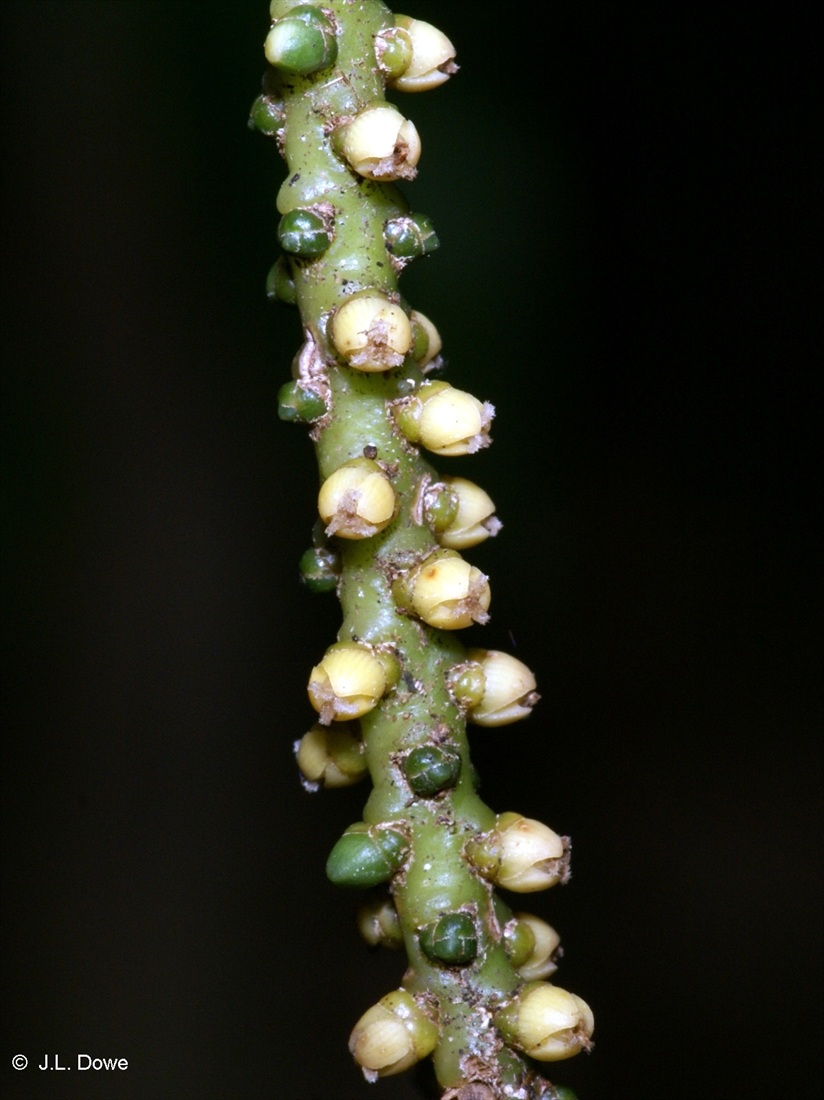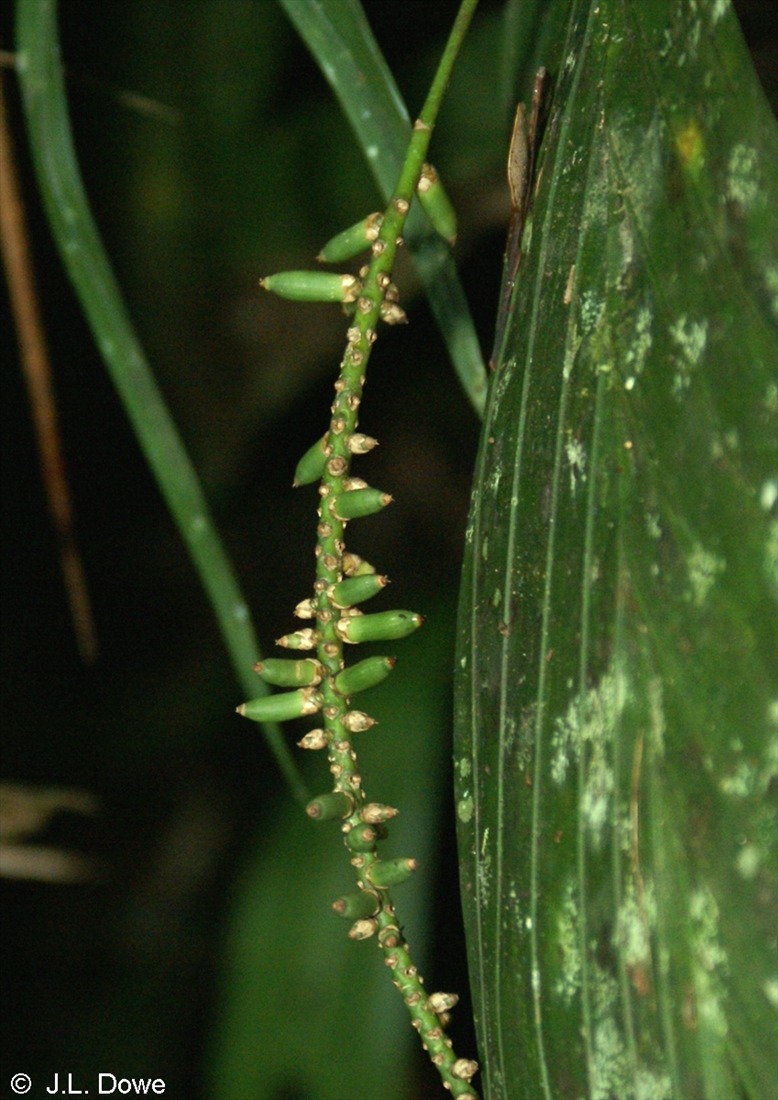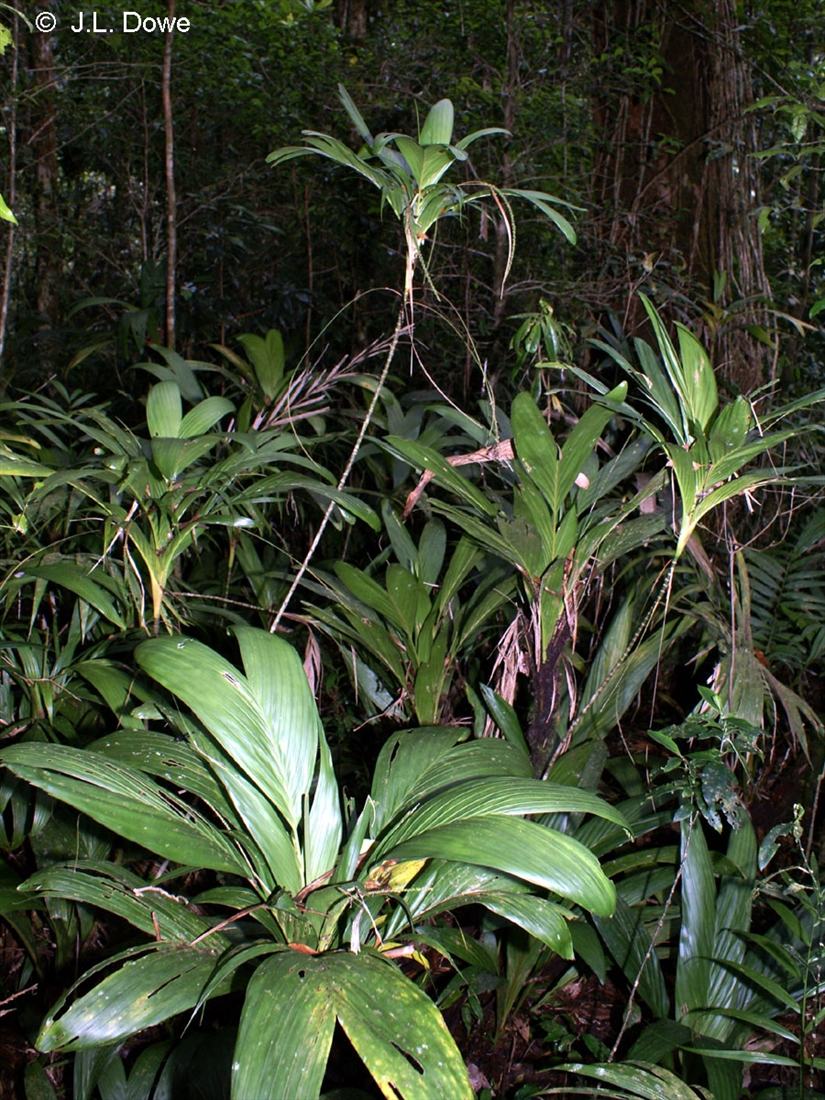Australian Tropical Rainforest Plants - Online edition
Linospadix apetiolatus Dowe & A.K.Irvine








Dowe, J.L & Irvine, A.K. (1997) Principes 41: 215. Type: Queensland, Mt Lewis, 24 Aug. 1996, Dowe 0369 Ferrero & Smith; holo: BRI; iso: K, QRS.
Palm, Walking Stick; Walking Stick Palm
Clustering small palm, 2-6 m tall. Usually flowers and fruits as a shrub 1-5 m tall.
Leaves variable, usually divided and pinnate with the basal and terminal leaflets or segments larger than any of the leaflets in between. Leaf or leaflet blades about 8-90 x 1.5-20 cm. All leaflets +/- sessile. Veins raised on the upper surface of the leaflet blade. Small densely arranged orbicular 'cells' visible with a lens.
Inflorescence about 50-80 cm long, spikes about 12-18 cm long and peduncles about 35 cm long. Male and female flowers may appear to be in separate spikes but both are produced in each spike and the males shed after anthesis. Stamens 4-7 per male flower.
Fruits +/- cylindrical, about 10-15 x 5-6 mm, red when ripe. Calyx lobes persistent at the base. Seeds about 9-10 x 3-4 mm, longitudinally ribbed.
Seed germination time 149 to 261 days. First pair of leaves compound with two broad-based, sessile, longitudinally veined leaflets or simple and deeply bilobed at the apex. At the tenth leaf stage: leaf compound with two broad-based, sessile, longitudinally veined leaflets or simple and deeply bilobed at the apex, venation longitudinal. Petiole base sheathing the stem. Surface of the leaf or leaflet blades corrugated. Lobes or leaflets 3-4 cm wide with about 6 or 7 main longitudinal veins.
Endemic to NEQ, restricted to the Mt Lewis-Mt Spurgeon area. Altitudinal range from 400-1300 m. Grows as an understory plant in mountain rain forest on soils derived from granite.





